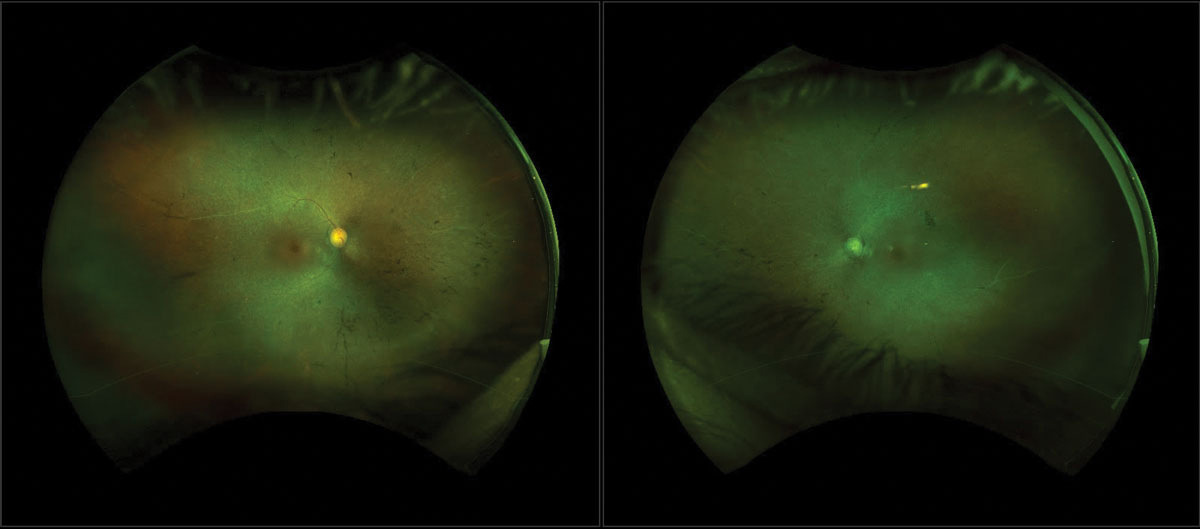 |
| Retinoic acid inhibitors could be able to treat patients with retinitis pigmentosa. Photo: Michael DelGiodice, OD, PhD, and Allison Viray, BS. Click image to enlarge. |
Rod and cone photoreceptors degenerate in retinitis pigmentosa. Downstream neurons survive and undergo physiological changes, including accelerated spontaneous firing of retinal ganglion cells (RGCs). Retinoic acid is the molecular trigger of RGC hyperactivity, but whether this interferes with visual perception is unknown. Researchers recently found that retinoic acid-induced retinal hyperactivity was a major contributor to vision impairment in mice. They believe that inhibiting retinoic acid could lead to a new therapeutic strategy for mitigating vision loss that may be applicable across a wide range of photoreceptor degenerative disorders, regardless of the underlying etiology.
The team used a pharmacological approach to block retinoic acid signaling and discriminate the effects of decreased signal from increased noise. Indirect evidence strongly suggests retinoic acid-induced retinal hyperactivity contributes to human vision impairment. Direct evidence, however, is difficult to obtain because methods for detecting hyperactivity are invasive and therefore inappropriate for humans.
The researchers’ previous studies had shown that retinoic acid-induced hyperactivity is maladaptive, presenting background noise that obscures signals that are already attenuated by the loss of photoreceptors. Their current study found that this hyperactivity specifically impairs not only simple light detection but also higher-order visual capabilities, such as reliable detection of specific visual scenes.
To assess whether disulfiram can inhibit degeneration-dependent activation of the retinoic pathway, the researchers injected the eyes of rd10 mice with the RAR reporter virus early in degeneration. They continuously provided them with ad libitum regular food or food containing disulfiram (2mg/kg) for 20 to 30 days and imaged their retinas later in degeneration.
They found that inhibiting retinoic acid does not affect events in the outer retina, leaving events in the inner retina as the primary mechanism of retinoic acid-induced hyperactivity. The study’s results on vision-impaired mice revealed that disulfiram improves behavioral contrast sensitivity, sharpens cortical neuron representations of spatial orientation and increases the fidelity of responses to naturalistic scenes, all consistent with improved visual perception.
“Whether disulfiram will improve vision in humans remains to be seen, but the barriers to answering this question seem relatively low,” the researchers wrote in their paper. “If disulfiram shows efficacy, then it could be administered orally, but local ocular delivery involving a new drug formulation might ultimately be more appropriate for avoiding the undesired systemic consequences associated with alcohol consumption.”
“Vision restoration therapies are aimed, at least for now, at the small fraction of patients with end-stage photoreceptor degeneration, but treatments targeting the retinoic acid pathway may be relevant to the much larger patient population with low vision,” they concluded.
Telias M, Sit KK, Frozenfar D, et al. Retinoic acid inhibitors mitigate vision loss in a mouse model of retinal degeneration. Sci Adv. March 18, 2022. [Epub ahead of print]. |

